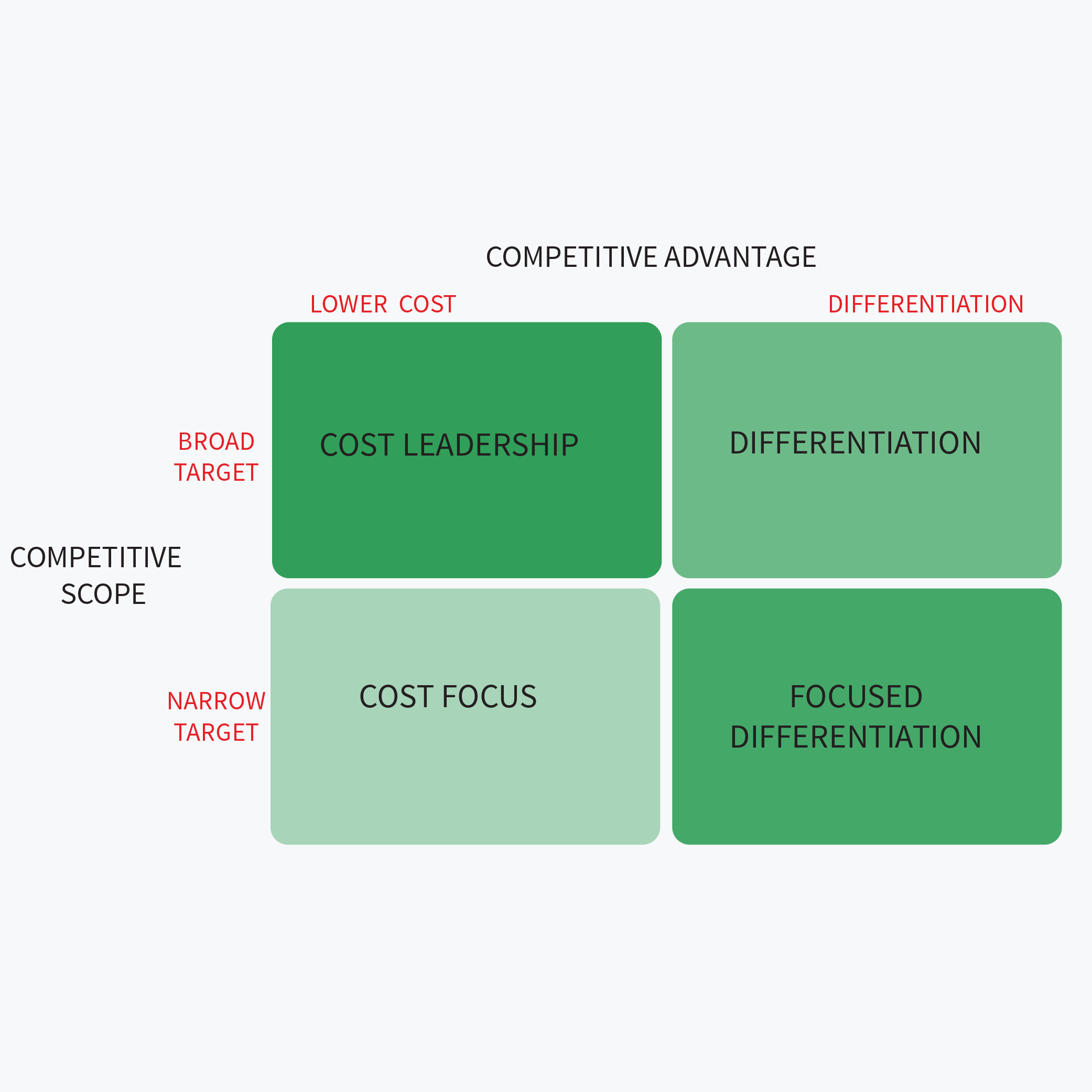Competitive strategies
Why?
Competitive Strategies builds upon the work of Porter (1985) who identified three generic strategies that a firm can follow, namely; cost leadership- differentiation-, and focus strategy. The students use these concepts as a platform for discussing and evaluating their ideas according to the strategic market situation. This exercise enables the students to identify ideas with high strategic potential, and ideas that need improvement.
How?
The teacher asks the students to place their ideas, one by one, into Porter’s model (see illustration). For each idea, the students need to discuss the competitive scope (i.e. whether their idea targets a broad or a narrow target market) and whether their idea aims at gaining competitive advantage through a cost leadership or differentiation strategy. Whilst a firm following a cost leadership strategy seeks to become the low cost producer, a firm following a differentiation strategy seeks to be unique.
Based on this, the students discuss the competitive situation facing their idea in relation to potential barriers and opportunities. This can lead to a more general brainstorming on how the competitive advantages of the idea can be further improved, or whether the students should abandon the idea.
Tips
The teacher has, in advance, defined a central theme and placed eight photos, related to this theme around the central box and in the outer eight boxes of the lotus blossom. The students use these eight photos as the starting point for a brainstorm. This is a quick and easy way to kick-start the method.
Literature
Porter, Michael E., (1985) Competitive Advantage., Ch. 1, pp. 11-15. The Free Press. New York.

